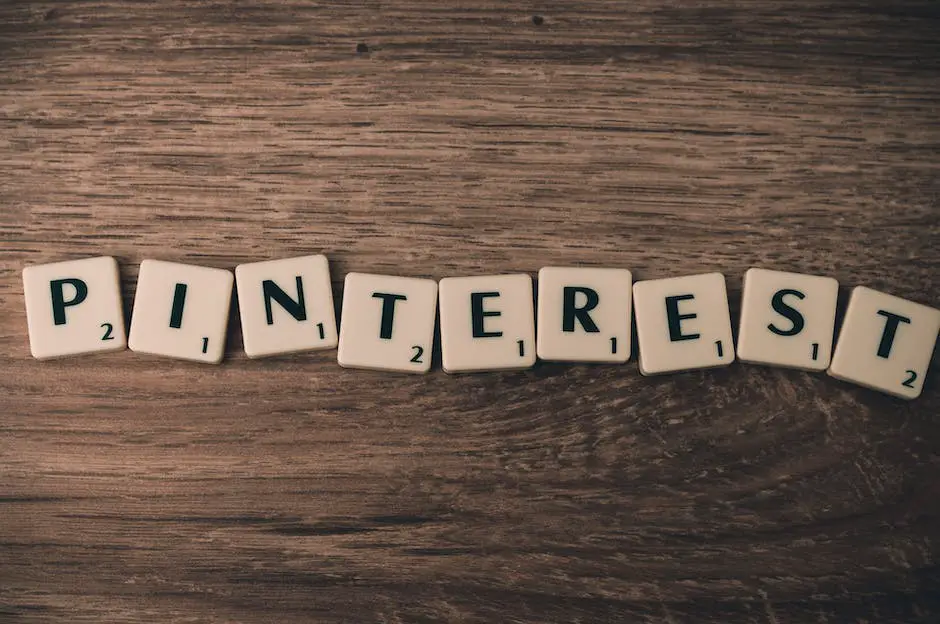The digital space is fast-evolving, demanding high-performance and quicker load times to keep users engaged. One technique that has proven immensely effective over the years in achieving this is ‘website caching’. In essence, caching serves as a cornerstone in the realm of web development and management, improving load speeds and enhancing the overall user experience. However, to leverage it effectively, one must understand its different types, impact, benefits, and implementation strategies. This insightful discussion lays out the basics, delves into the diverse caching types, explores their outcomes, and provides tangible guidance on their implementation and management.
Understanding the Basics of Website Caching
Understanding Website Caching
Website caching involves temporarily storing various elements of a website, such as images, web pages, and other types of web content. This is often done to reduce latency and server load. When a user visits a website, the elements of the site are saved on a local hard drive, in a process called caching. Once these elements are cached, the website can load faster for the return visitors or even for the first-time visitors if some data exists in user’s cache already.
The purpose of caching is to improve the efficiency of the website. It not only speeds up the loading process but also enhances the user experience by making the site more responsive. Caching also is beneficial from a server perspective, as it reduces the load on the server and minimizes the risk of it crashing due to heavy traffic.
Different Types of Website Caching
There are several types of website caching, each serving different purposes.
- Browser Caching – This happens at the user end. Web browsers store static files, like CSS, JavaScript, and images of a website, to speed up subsequent visit to the same site.
- Page Caching – This is the most common type of caching. Entire HTML of a page is stored when the page is rendered for the first time, making subsequent loads faster.
- Database Caching – Involves storing the results of a query to prevent repetitive queries from overloading the server.
- Object-based Caching – Use for storing the data that is CPU intensive to create, like complex query results, API calls or full page caches.
- CDN Caching – Content Delivery Network (CDN) caching involves caching website content within a network of servers located worldwide.
- Opcode Caching – Accelerates a website by eliminating the repetitive reading and parsing of PHP code.
Understanding the Basics of Website Caching
Caching on a website is a complex process involving numerous key components like:
- The Cache-Control headers, these have the function of defining caching policies for each individual web page.
- A cache server, the component in charge of gathering and safeguarding the cached data.
- Web protocols, the likes of HTTP, that make the transfer and communication of web content possible.
- A caching plugin or tool, a software solution that can ease the process of applying caching policies.
To conclude, getting a grasp of the basic principles of website caching is a cornerstone of efficient website management and development. A properly set up cache will not only enhance the speed of your website and boost server performance but will also significantly improve the user’s experience.

Exploring Different Types of Caching
Digging Deeper into Browser Caching
There’s more to website caching than meets the eye. One crucial aspect is the browser cache, an allocated space on each website visitor’s computer where their browser stashes away elements from web pages they’ve visited. This type of caching happens at the forefront. Suppose a user revisits the same website. In that case, the browser will source the page from its cache rather than placing a new server request, resulting in decreased server burden and faster page loading time. While it’s primarily up to the browser to decide what content to cache, you can use specific website instructions to play a part in directing this process.
Content Delivery Network (CDN) Cache
A Content Delivery Network, or CDN, is a global network of servers that store a cached version of your site. When a user accesses your site, the CDN will deliver the cached content from the nearest server to the user, instead of your original server. This greatly reduces the distance that the data travels, significantly improving page load time. This is especially beneficial for websites serving a global audience. CDNs are also capable of detecting the device type and adapting the content to better match the device, helping to enhance user experience.
Reverse Proxy Cache
A reverse proxy cache, as the name suggests, is a type of cache that functions as a go-between for client requests and your server. It intercepts requests heading to your server and, if it has a cached version of the requested resource, delivers it directly to the client. This process bypasses your server completely, conserving server resources. Website owners usually configure reverse proxy caching themselves, allowing for more control over what gets cached. This type of cache is often used to reduce latency and protect the server from large traffic spikes.
Object Cache
Object caching involves storing database queries so when the same query is needed again, it can be served from the cache. This saves the time of querying the database repeatedly and can greatly speed up PHP execution times, thereby helping to reduce server load. Object caching is good for sites that have complex and time-consuming database queries.
Page Cache
Page caching involves generating and storing an HTML version of a webpage, and serving that instead of dynamically generating it with PHP on each visit. This significantly reduces server load and helps to improve page load times. It’s particularly beneficial for websites that receive heavy, sporadic traffic where server resources could become overwhelmed.
Opcode Cache
Opcode caching involves caching the compiled PHP code between every request. Instead of the server having to repetitively compile the same PHP code for each visit, it can serve the previously compiled code from the cache – saving time and server resources. This type is beneficial for websites with heavy PHP scripts.
CDN Cache
Content Delivery Network (CDN) Cache is the process of storing website content at multiple geographical locations to improve page load speed. This means that when someone accesses a page, the CDN can deliver content from a server that’s geographically closer to the user. CDNs also offer more security to the site by serving as a buffer between the site and all incoming traffic.
Overview
Various forms of caching exist, each with its distinctive strengths and potential applications. Often, these types are applied together in a layered caching strategy, enhancing the speed of your website and elevating the experience for visitors.

Impact and Benefits of Website Caching
Demystifying Website Caching
Website caching stands as an integral part of a site’s performance and its overall user experience. It consists of temporarily storing webpage copies to deliver to users, thereby accelerating the time it takes for a page to load. When a user revisits the same webpage, the request is not sent to the server again; instead, the cached page version is presented. This significantly cuts down on server load and bandwidth use while enabling quicker content delivery.
Different Types of Website Caching
There are primarily two types of website caching, namely client-side caching and server-side caching.
Client-side caching involves storing cache data on the user’s device. When a webpage is loaded for the first time, it saves data such as HTML pages, CSS stylesheets, and images on the local storage. In this type of caching, the user’s web browser checks the cache to see if a certain request is already in its storage before reaching out to the server.
On the other hand, server-side caching occurs on the server. It is further split into different types such as page caching, object-based caching, and opcode caching. Page caching is creating static HTML versions of dynamic web pages and serving these to users. Object-based caching involves storing database queries to reduce the load on the database. Opcode caching deals with storing compiled PHP code to avoid redundant compiling of code.
Impact of Website Caching
The primary advantage of website caching is the dramatic improvement in site load time. Since the server is not processing new requests for content already cached, pages load much faster, contributing to a better user experience.
Aside from providing speed, caching significantly reduces the load on the hosting server. Without caching, every time a user requests a page, the server has to do work to serve that page to the user. By allowing repetitive data to be served from the cache, it lightens the server’s load, reducing the risk of it becoming overloaded.
Benefits of Website Caching
The benefits of website caching extend well beyond user experience and server health. Effective caching strategies can also contribute to search engine optimization (SEO). As search engine algorithms increasingly prioritize page load speed in their rankings, a faster site due to caching can lead to better search result positions.
Additionally, by decreasing the amount of bandwidth required to serve a webpage, website caching can significantly reduce hosting costs. Especially for websites with heavy traffic, setting up a proper caching mechanism can result in an impressive reduction in expenses.
By delving into the various types of website caching, their effects, and advantages, both website owners and developers empower themselves to make educated choices that boost site performance and the user experience while also minimizing costs.

Implementing and Managing Website Caching
Deciphering Website Caching
Website caching operates as a technique that stashes copies of web pages temporarily, therein enabling more rapid access during repeat visits. This method mitigates server load and accelerates content delivery, ultimately refining the overall user experience by diminishing page load times.
Types of Website Caching
There are multiple types of website caching including Browser Caching, Page Caching, Object Caching, Database Caching, CDN Caching, and OpCode Caching.
- Browser Caching: A user’s browser stores static files (like HTML, CSS, JavaScript, images) of previously visited websites. This way, when they revisit, these files don’t need to download from the server again.
- Page Caching: Involves storing the entire HTML of a webpage so that the server does not have to rebuild it every time the page is requested.
- Object Caching: In this method, the results of database queries and the computations are cached, which accelerates the dynamic aspects of your website.
- Database Caching: This technique involves storing the result-set of a query in the cache so when the same query is called, results are returned from the cache rather than the database.
- CDN Caching: CDN caching stores the website’s files in various locations worldwide to ensure fast access to your site, regardless of the audience’s geographical location.
- OpCode Caching: It involves storing precompiled script bytecode in the cache, which eliminates the need for PHP to load and parse scripts each time a request is made.
Choosing the Right Type of Cache
The right caching strategy depends on the needs and specifications of your website. For small scale websites or blogs, page caching, and browser caching may be sufficient. Complex, dynamic websites might need object caching and OpCode caching in addition to page caching. Large, high-traffic websites should consider implementing a CDN.
Implementing and Managing Website Caching
Implementing caching generally requires identifying your website’s needs, choosing the caching types to use, and setting up the cache.
- Identifying Needs: For a dynamic website where content regularly updates, object caching can be advantageous. For websites serving static content, page caching is useful.
- Choosing Caching Types: Depending on your website’s needs, you can set up the relevant caching types.
- Setting Up Cache: Tools such as CDN providers, plugins, and web application setups enable website caching. For example, WordPress websites can use plugins like W3 Total Cache or WP Super Cache.
Managing cache involves regularly monitoring your caching setup to ensure its effectiveness, clearing and rebuilding the cache as needed, and troubleshooting issues.
Troubleshooting Caching Issues
Common issues in caching include content not updating correctly and website display issues. Troubleshooting generally requires clearing caches in your browser, plugins, and server. If this doesn’t solve the issue, it helps to check if the correct settings were used when setting up the cache.
Best Practices
- Never cache sensitive data that could compromise your users’ security and privacy.
- Regularly review cache usage to adjust its settings and ensure optimal performance.
- Use versioning to solve issues with browser cache. Whenever you update a file, change its version number to let the browser know it should refresh its cache.
- In database caching, avoid caching large result-sets that could lead to out-of-memory issues.

It is evident that caching is a powerful tool that web developers can wield to drastically improve website performance and user experience. From the diverse caching types such as Browser Cache, CDN Cache, Reverse Proxy Cache and others, each holds unique attributes and application scenarios. Implementing and managing cache for a website may appear daunting, but with the right knowledge, tools, and best practices, it becomes manageable. Therefore, understanding and implementing caching is not just an option but a necessity in today’s digital era to create efficient, fast, and reliable websites that effectively serve the end-users.
